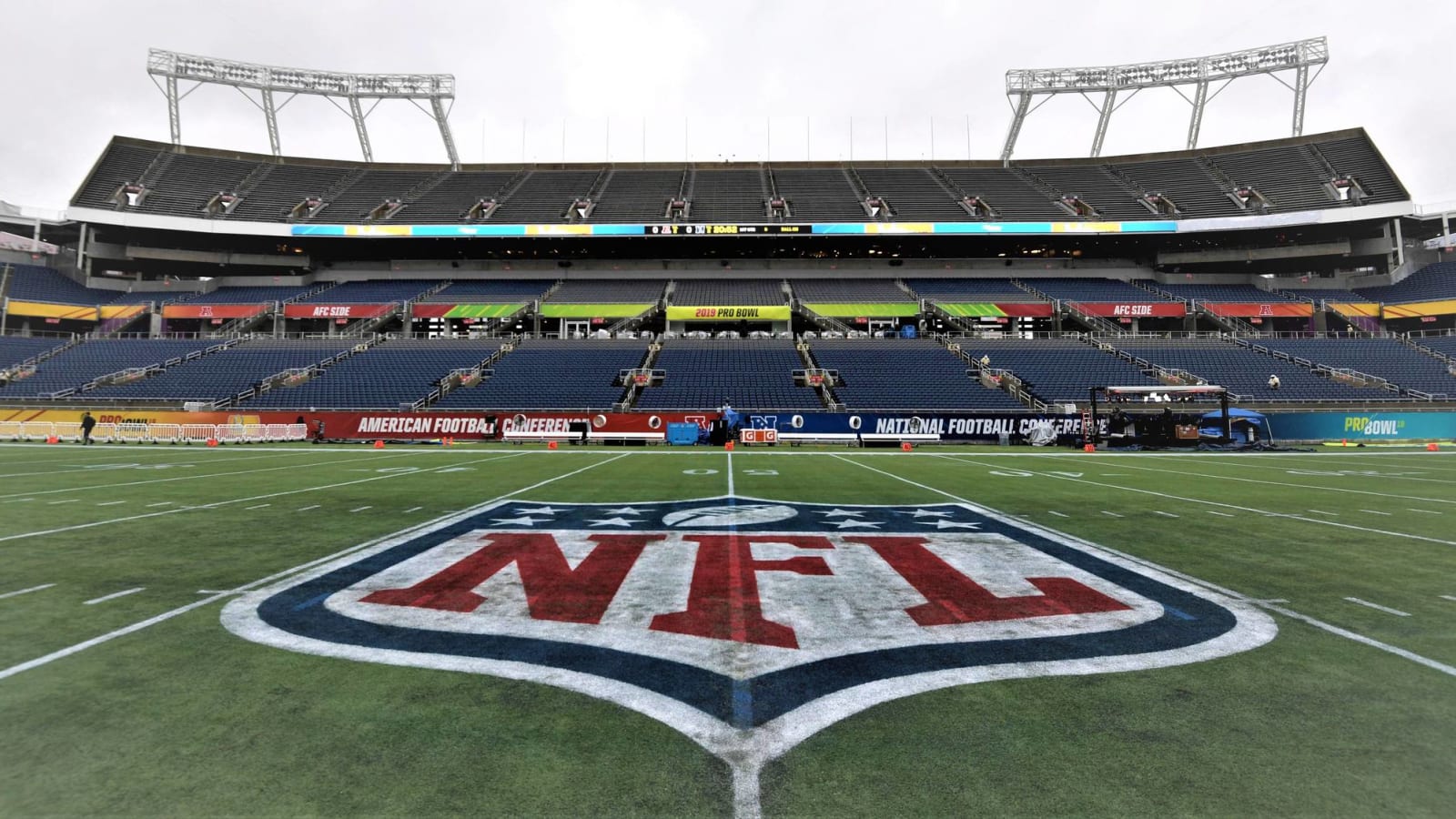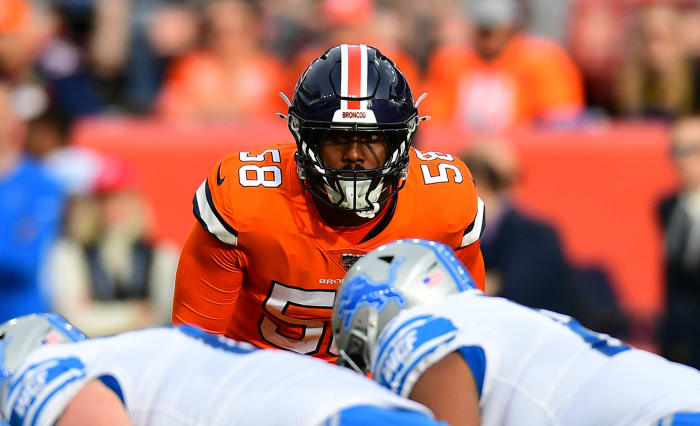
A grim outlook: 10 major issues NFL faces as it aims for 2020 season
The subject of the NFL playing games without fans surfaced this week. Dr. Anthony Fauci, director of the National Institute of Allergy and Infectious Diseases, said it would be feasible for sports to resume without spectators. This strategy surfaced for multiple sports in March — before the positive COVID-19 test of Utah Jazz player Rudy Gobert brought nearly everything to a standstill in athletics.
With the NFL committing to a virtual draft and all but cementing an entirely virtual offseason, the league must soon determine a course of action regarding training camp, the preseason and regular season. Saints head coach Sean Payton's, Broncos star Von Miller's and Rams center Brian Allen’s positive coronavirus tests during an advised quarantine reveal the kind of issues the league will face for the foreseeable future.
Here are 10 key issues for the NFL as it formulates a plan for the 2020 season:
Roster sizes put NFL in different conversation
Nearly 700,000 Americans have been infected by the coronavirus; some 35,000 have died from the disease. COVID-19 will hover over sports for a while. It is impossible to assess the viability for a September sport returning at this point, but when that does happen, testing will be the chief issue.
By early May, the NFL will include nearly 2,900 players. Even when each team cuts its roster down to the regular-season limit (65, including practice squads), that number will shrink to only 2,080. The NBA features 450 players; Major League Baseball, 780. Almost 1,000 coaches are part of the 32 NFL teams’ staffs, and each franchise employs dozens of front-office personnel.
Training camps require the bulk of this massive employee base to be on hand. Given the struggles Americans have faced securing tests —and states’ various shelter-in-place orders, at least one of which (Virginia) is in place until June — many changes will need to occur between now and late July to increase the likelihood the NFL will start on time. The testing undertaking and the potentially extreme changes for the thousands of NFL personnel and their families during the season would be massive.
It is too early to answer this question, but would it be right to devote medical personnel to testing football players, coaches, etc., numerous times over a five- to seven-month period?

What about immunocompromised players?
Miller’s positive COVID-19 test illuminates both a scary issue for the future Hall of Fame linebacker and a potentially huge hole in NFL plans to forge ahead with the season. Miller has asthma, which may well place him in a higher-risk group, according to the Centers for Disease Control and Prevention. While the bulk of the NFL likely does not fall into this category, there will be players who have greater chances of becoming seriously ill or dying from this virus. Asking this contingent to play under a backdrop with this much uncertainty doesn't make sense.
No vaccine is expected to be in place by the time the season is scheduled to begin. Select players’ various vulnerabilities cannot be known, but Miller’s contraction could be eye-opening. The NFL would face horrible optics by putting this sect of its workforce at risk. Former Steelers safety Ryan Clark sat out multiple games in Denver because of a scary incident his sickle cell trait caused while playing in the high altitude in 2007. Imagine this on a much larger scale.
Relocations likely
To prevent teams from unfair advantages, the NFL’s virtual offseason rules stipulate no team can return to its facility until all 50 states’ stay-at-home orders cease. What if some of those drag into the late summer? Los Angeles mayor Eric Garcetti said it will be difficult to envision teams playing sports in L.A. this year; California Gov. Gavin Newsom said the same regarding all teams in the state. If the Chargers, Rams and 49ers cannot play in California, they will need to uproot. They might not be the only ones.
Facing a significant logistics problem, the NFL will likely discuss the concept of playing games in only a few cities — as the NBA and MLB have. The other leagues needing to make decisions first gives the NFL an advantage.

What would no-fan games look like?
It would look silly for the NFL to play in 70,000-seat venues with no spectators. But the league, as free agency and the draft most recently showed, can be quite rigid. At games, various coaches are stationed in press boxes. Were the NFL to move games to smaller stadiums, these sites would need to feature up-to-code facilities. Although positioning where certain offensive and defensive coordinators sit sounds rather trivial in the grand scheme, issues like this will come up if teams are asked to temporarily relocate.
The NFL playing without fans would seemingly present an interesting opportunity to capture more in-game sound than ever before. Teams will be against that. Given the money and stakes attached to the nation’s most popular sports league, the NFL will not allow XFL-style access. Beyond audibles and approved mic’d-up soundbites, the NFL game-day audio remains largely hidden. Empty stadiums would not only open the door to non-network-friendly dialogue, but it would also make coaching more difficult due to the possibilities of sensitive matters emerging.
That aspect would both add to the league’s already-rampant paranoia and create chances for historically entertaining sequences for viewers.
Playoffs could be grim
A game without fans would eliminate home-field advantage and may strip football of some of its mystique. The “fan-less football, no football” argument checks out, but these games could be quite depressing.
Home-field advantage disappearing would weaken some teams and make the playoffs a somber slog. Division championships would be fairly meaningless — beyond the four that secure bye access — with no home-game atmosphere coming along with it. That would increase the chances of a “road” wild-card team making a Super Bowl run — which hasn’t happened since 2010 — but a motivation issue could emerge come January.
NFL playoff pay is minimal; players on teams that lost wild-card games made between $28,000-$31,000 for a first-round appearance last season. That number only increased to $56K by the conference championship round. The tight surveillance and radically altered lifestyles a season under these circumstances could bring would increase the number of players who would like to end this asterisks-filled season after Week 17 and return to whatever normal life resembles in January 2021.
Silent Super Bowl?
Should Super Bowl LV occur in a fan-less venue (slated to be Raymond James Stadium in Tampa), it would signal a stark reminder of how much — nearly 11 months after it arrived in the United States — COVID-19 altered life. While the NBA is facing this same issue for when/if it holds its Finals, it dwarfs in popularity compared to the Super Bowl. Holding one devoid of most of the pageantry with which the game is associated would be perhaps the defining coronavirus sports image.
Novelty aside, this would not be a celebrated Super Bowl — effectively minimizing the game and the accomplishment of winning it.
Scheduling matters
A players strike paused the 1982 season for two months. The NFL pushed back Super Bowl XVII and restructured the playoff format —which became a 16-team, bye-less bracket — but each team lost seven games because of the strike. The NFL will not consider shortening the 2020 season for months and may try to salvage its 17-week slate even if a delay occurs come September. But the NFLPA might take issue with a lengthy hiatus and a full 16-game season.
This regular season bleeding into the offseason would give players less recovery time before free agency and OTAs. And as this year showed, not being healthy going into free agency proved costly for certain players.
The NFL delayed its schedule release until May 9 and is reportedly planning to structure teams’ dockets in a way that will make them easier to adjust. It would seem teams’ September slates would contain non-division games. With interconference contests being the least consequential on teams’ schedules, for tiebreaker purposes, it’s worth wondering if the NFL will stack those early. Lopping AFC-NFC games off the schedule would make for a pre-interleague-play MLB-style season and benefit teams with tough interconference divisional draws.
Another fight looming?
No specific language exists within this CBA providing a road map for compensation during a pandemic. If the NFL is forced to shorten its season, or cancel it, an avalanche of financial issues will arise. The majority of NFLers rely on their weekly base salaries. Those will not arrive until games are played. If the coronavirus shortens the season, the NFL and NFL Players Association will need to hammer out an agreement — but said deal will almost certainly cost players some game checks.
In the event COVID-19 wipes out the season or severely shortens it, the NFLPA will need to fight to prevent players’ contracts from tolling. A tolled contract means it rolls over to the next year as is. Contracts tolling because of a pandemic would obviously be a raw deal for players. Perpetually fighting against ownership, the NFLPA will be in for another one on this front.
Spillover into next year
This year’s CBA passed by a 1,019-959 margin — in large part because of owners’ class-warfare effort. The CBA proposal sweetened the pot enough for the minimum-salary player but did less to improve the middle- and upper-class talents’ situations. The carrot of the addition of the 17th regular-season game and extra playoff team for players was to be bigger cap spikes — brought on by record-shattering TV deals, which the league (precoronavirus) planned to negotiate this year — compared to the approximately $10 million-per-year bumps the 2011 CBA brought. A year without fans may change the equation.
With an unprecedented loss of revenue impacting teams — should spectators, in fact, not be allowed in stadiums — 2021’s cap spike will be in jeopardy. Although it seems in poor taste to discuss reduced earnings of millionaires and near-millionaires, players in line for extensions or free-agency paydays may see historically poor timing hijack those plans.
The tenuousness of a 2020 season
More than 1,700 players appear on active rosters after training camp. Due to injuries and various promotions from practice squads, dozens of others see game action annually. If one of them tests positive, it could slam the door on the 2020 season. The quarantines that Gobert’s positive test caused will pale in comparison to what would have to happen if an NFL player contracts the virus during the preseason or regular season.
The league will need to walk an unprecedented tightrope, and extensive hurdles stand in the path to starting the season on time and sticking the landing with a February Super Bowl. It seems unreasonable — given the events of the past five weeks — to expect the NFL’s season to be uninterrupted. As evidenced by the NBA, NHL and March Madness, an interruption threatens the season. The NFL must be prepared for the worst (again, from a sports perspective) that there will be too many impediments to starting and finishing its 101st season.
More must-reads:
- Roger Goodell: NFL schedule will still be released May 9
- Roger Goodell to announce NFL draft first-round picks from his basement
- The '100 catches in an NFL season' quiz
Breaking News
Customize Your Newsletter
 +
+
Get the latest news and rumors, customized to your favorite sports and teams. Emailed daily. Always free!

